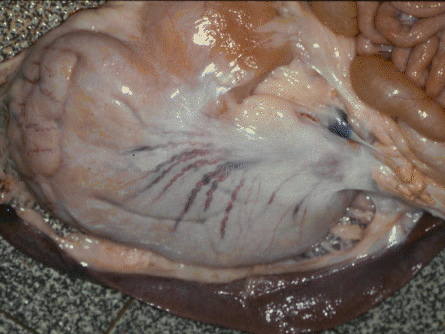
1. Oesophagus. The red muscle nearest the mouth is where swallowing
is initiated by voluntary muscle. Thereafter, the bolus of food is
moved
down the oesophagus by smooth muscle peristalsis.
2. There is a simple stomach (pig is monogastric) with one
main
chamber.

Gland regions are defined histologically but are not evident from an outside view.
1. cardiac gland region
2. oesophageal gland region
3. fundic gland region
4. pyloric gland region
3. Small intestine (duodenum, jejunum & ileum)
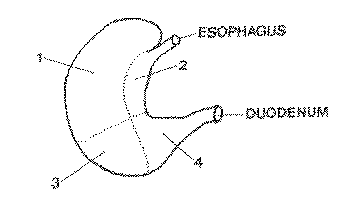
The small intestine is important for the absorption of digested
food.
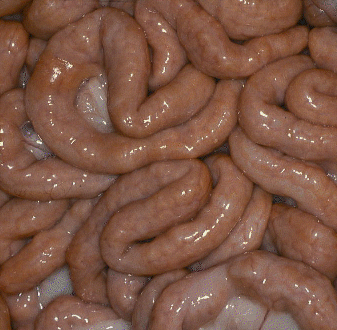
Villus - small projections into the lumen (hollow cavity) of the
small
intestine
Lacteal - collects lymph fluid with digested fat
Lymph vessel - collects lymph from lacteals
Cisterna chyli - collects all the lymph from intestines and remainder
of body
Right thoracic duct - empties lymph into main blood stream of the
posterior
vena cava
4. Caecum - dead-end, like the human appendix only much
larger.

5. Large intestine
6. Look for mesenteric lymph nodes.
7. The pig liver has four large lobes plus a small caudate lobe.
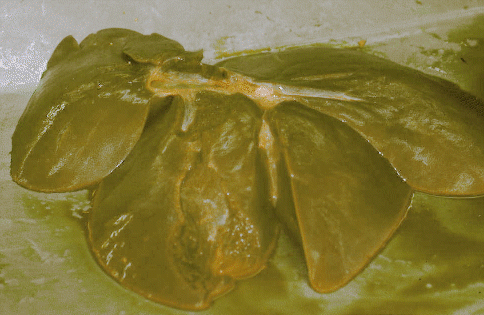
Histologically the liver is composed of lobules.
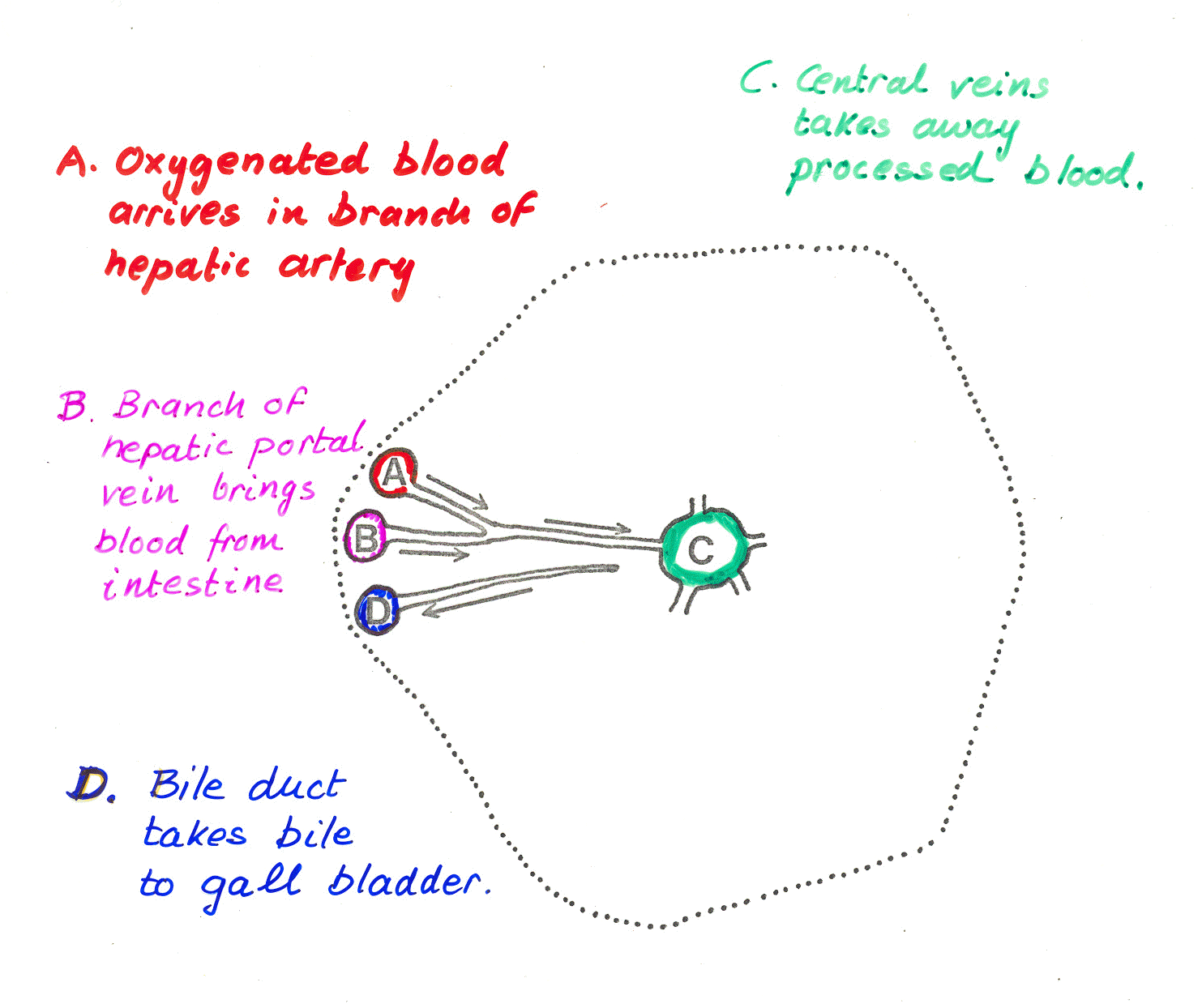
Hepatic Artery - brings arterial blood to the corners of the lobule.
Hepatic Portal Vein - brings blood with dissolved nutrients from the
small intestine.
Hepatic Vein - located centrally and removes blood processed by the
liver lobule.
Branch of Bile Duct - collects bile at the corners of the lobule.
FURTHER INFORMATION ON LIVER LOBULE
Rounds - Small Intestine - Beef, Pork, Lamb
Runners - Small Intestine - Beef
Middles - Large Intestine - Beef, Pork
Beef Bungs - Caecum - Beef
Hog Bungs - Large & Small Intestine - Pork
Caps - Caecum - Pork
Weasand - Oesophagus - Beef
Bladder - Bladder - Beef, Pork
